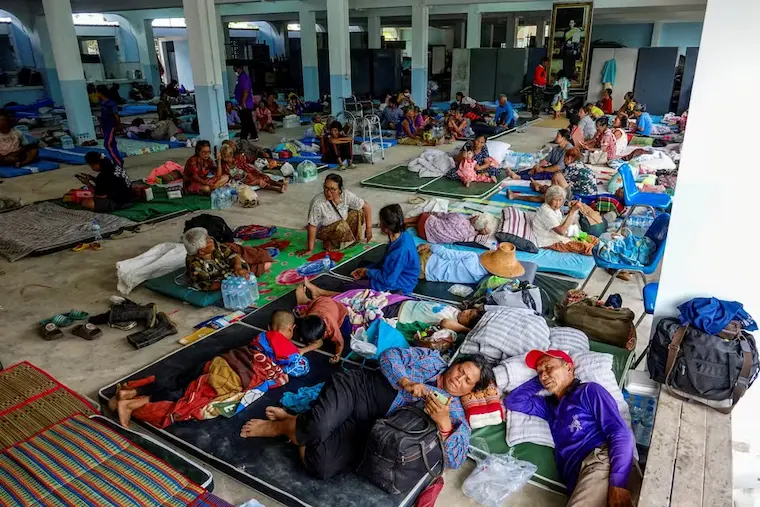
The rising death toll and refugee surge across borders risk triggering a humanitarian crisis
A Flashpoint Reignited
Tensions between Thailand and Cambodia, simmering for decades, erupted into the bloodiest border clash in recent memory. In July 2025, an unexpected escalation along the disputed Dangrek mountain range triggered intense firefights, heavy artillery bombardments, and aerial strikes-resulting in a staggering death toll that dwarfed previous skirmishes.
While territorial disputes have long punctuated relations between the two Southeast Asian neighbors, analysts suggest this latest outbreak was fueled by political instability, military posturing, and unresolved grievances over cultural heritage and strategic enclaves.
Table of Contents
History Behind the Border Dispute
The animosity centres around overlapping claims to historically significant land and temples, especially the Preah Vihear temple complex. Though the International Court of Justice ruled in favour of Cambodia in 1962, Thailand has persistently contested surrounding territory, leading to intermittent clashes.
- 2008–2011: Sporadic violence killed dozens and displaced thousands
- 2025 Resurgence: Fuelled by nationalist rhetoric and military build-up
Scholars argue the region’s colonial-era maps and vague demarcations have left room for competing narratives, further inflaming patriotic sentiments on both sides.
The July 2025 Clash: What Happened?
Beginning on July 18th, Thai forces allegedly crossed into Cambodian territory during a routine patrol near the Koh Kong province. Cambodia’s military responded swiftly, triggering a fierce exchange lasting several days. Key developments:
- Artillery strikes caused widespread devastation across four villages
- Drone warfare introduced for the first time in this conflict
- Civilian casualties surpassed 130, with thousands fleeing their homes
On-ground footage and satellite data showed scorched farmlands and destroyed infrastructure, with humanitarian agencies struggling to deliver aid amidst crossfire.
International Reaction & UNSC Intervention
The United Nations Security Council (UNSC) convened an emergency session on July 25th following alarming reports from ASEAN monitors and the UN Human Rights Office. Key outcomes:
- Ceasefire demand issued to both parties
- Sanctions threats floated against violators of international humanitarian law
- Peacekeeping proposal considered but not yet approved
Global powers including the U.S., China, and France urged restraint but echoed concerns over regional destabilization.
“We call for an immediate cessation of hostilities and a return to diplomatic dialogue,” – UNSC Resolution Draft
ASEAN’s Role: A Test of Regional Diplomacy
ASEAN, typically a platform for consensus-building, now faces one of its gravest challenges. While its charter discourages interference in member states’ internal affairs, the scale of this clash has prompted calls for direct mediation.
- Indonesia and Singapore are pushing for a joint peace envoy
- Vietnam urges a stronger regional security framework
- Myanmar and Laos remain largely neutral
The rising death toll and refugee surge across borders risk triggering a humanitarian crisis that could spill into neighbouring regions if not contained.
Impact on Civilians: Voices from the Ground
Aid workers report dire shortages of food, water, and medicine in border areas. Local hospitals are overwhelmed, and some communities are relying on volunteer-run medical tents.
“We woke to the sound of explosions. The sky turned orange. My children haven’t stopped crying,” said a resident of Pursat province.
Social media has become a lifeline for coordinating evacuations and documenting atrocities. However, misinformation is rampant, complicating relief efforts and accountability.
The Role of Technology in Modern Warfare
Both sides deployed surveillance drones, precision-guided munitions, and jamming technologies—a shift from previous engagements. This signals an evolution in battlefield strategy:
| Weapon Type | Used By | Impact |
|---|---|---|
| Surveillance UAVs | Both sides | Real-time targeting |
| Guided Missiles | Thailand | Infrastructure damage |
| Signal Jamming Units | Cambodia | Disrupted communications |
Military analysts note that technological superiority may play a decisive role in future confrontations.
What’s Next?
With ceasefire talks teetering, the path forward remains uncertain. Possible scenarios include:
- Return to status quo: Ceasefire without resolution
- International intervention: Peacekeepers on the ground
- Formal border re-negotiation: Under UNSC oversight
Both nations face domestic pressure to avoid escalation but also preserve national pride, making diplomacy a tightrope walk.
Final Thoughts
The Thailand-Cambodia border clash is more than a regional conflict, it’s a reflection of unresolved historical wounds, modern military ambition, and fragile diplomacy. The world watches with bated breath, hoping that peace prevails over pride, and that dialogue replaces devastation.
Stay updated with the latest news on Rapido Updates. Keep yourself updated with The World, India News, Entertainment, Market, Automobile, Gadgets, Sports, and many more